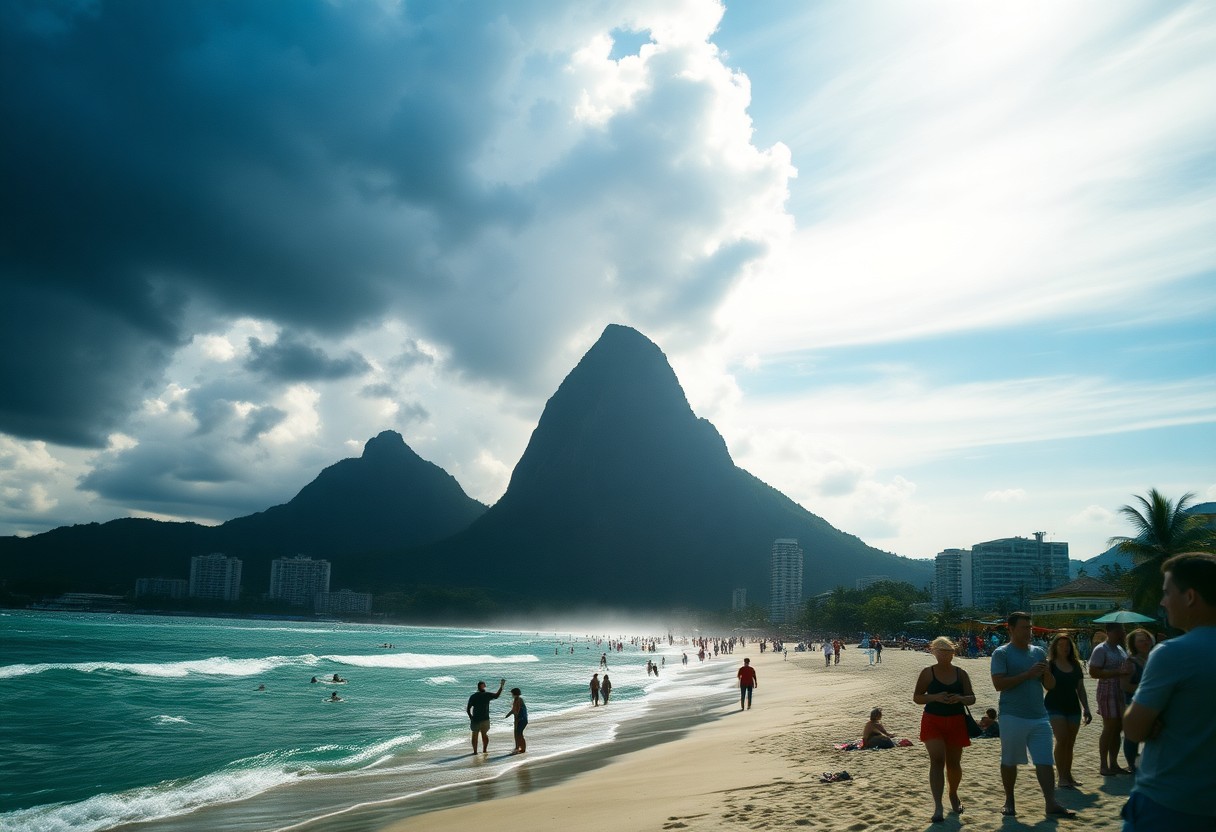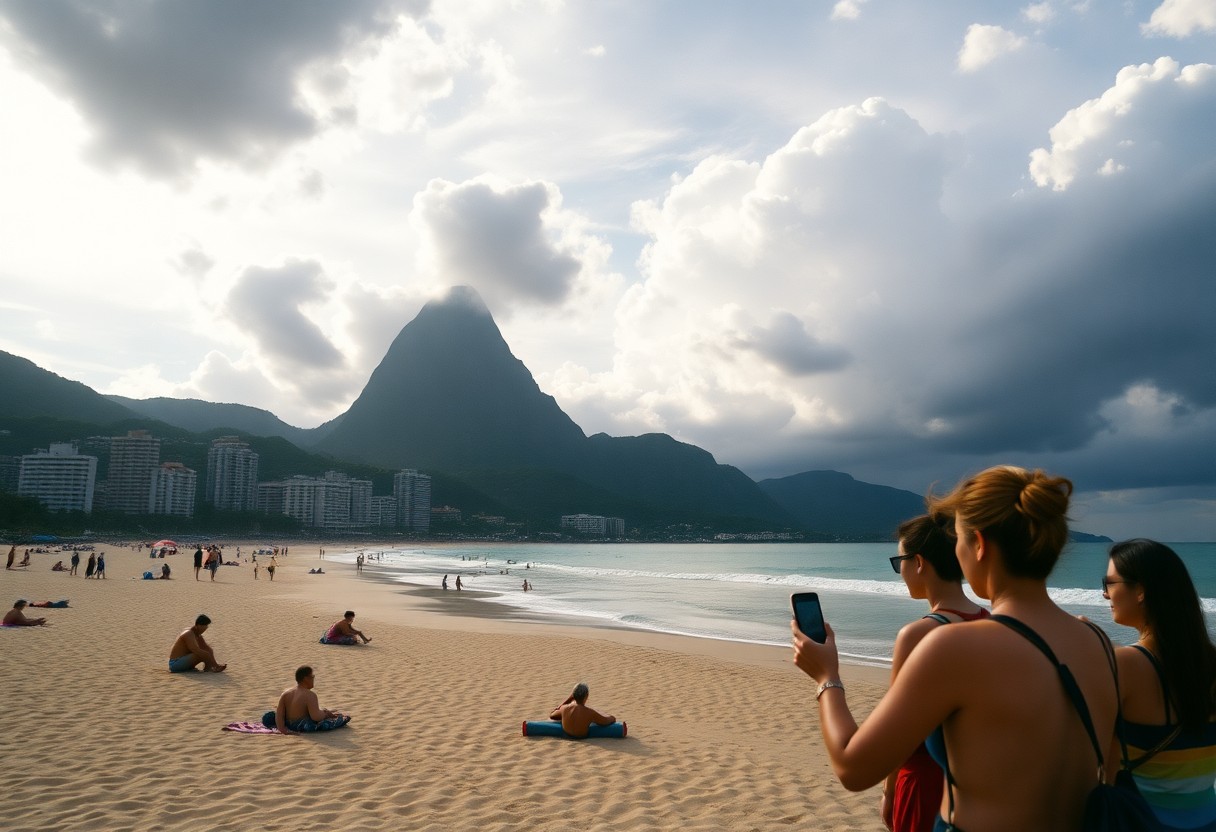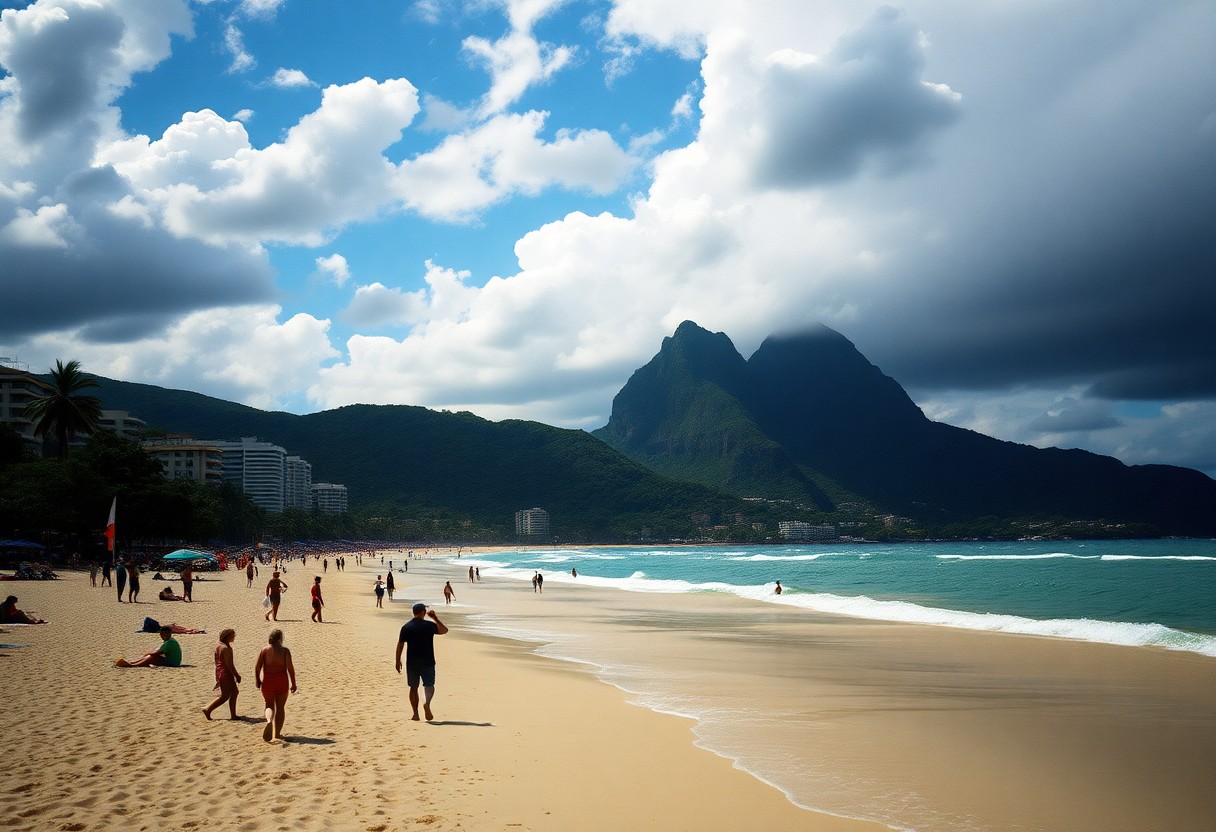As you embark on your thrilling adventure to Rio de Janeiro, understanding the optimal times to visit can greatly elevate your travel experience. This lively city experiences temperate weather year-round, yet each season presents unique features that could sway your travel decisions. The vibrant summer months, spanning December to March, are renowned for colorful Carnival celebrations, but they also bring heavy rains and significant tourist traffic. Your perfect timing will hinge on your personal likes: for those who love soaking up the sun and indulging in beach fun, the spring months from September to November are ideal, offering mild weather and fewer crowds. Alternatively, budget-minded travelers may find winter (June to August) to be a more cost-effective option. Aligning your visit with Rio's climate and seasonal happenings ensures an unforgettable experience.
Explore the Year-Round Weather Patterns of Rio de Janeiro for Better Planning
Before you finalize your travel plans for Rio de Janeiro, it is crucial to grasp the city’s tropical climate patterns. The warm climate generally fluctuates between 68°F and 88°F (20°C to 31°C) throughout the year. You should focus on two main seasons: the hot and humid summer from December to March, and the cooler, drier winter from June to September. Each season presents its own set of benefits and hurdles, making it essential to select the right time for your visit based on your intended activities and comfort levels.
Detailed Seasonal Temperature Analysis for Effective Travel Planning
| Season | Temperature Range |
|---|---|
| Summer (Dec-Mar) | 77-88°F (25-31°C) |
| Winter (Jun-Sep) | 68-75°F (20-24°C) |
Throughout the year, Rio consistently offers pleasant temperatures. The summer months may experience extreme heat, while winter presents milder conditions ideal for exploring the outdoors. Recognizing these temperature changes is key to effectively organizing your itinerary, enabling you to fully immerse yourself in all that this stunning city has to offer.
Essential Rainfall and Humidity Considerations for Your Trip
When planning your visit to Rio, it’s imperative to factor in the city’s rainfall patterns. Here are some critical points to remember:
- Rainy season: December to March
- Average annual rainfall: 44 inches
- Highest humidity levels: 80% during summer
- Driest months: June to August
The humidity in Rio can significantly influence your comfort while navigating the city. Here are some important aspects to consider:
- Morning fog may obscure visibility at major tourist sites
- Refreshing coastal breezes offer a welcome reprieve from high humidity
- Evening humidity tends to rise near the beaches
- Air conditioning is typically available in most accommodations

Dive into the Excitement of Rio's Peak Season (December-March)
If your travel plans align with Rio's peak season, brace yourself for sweltering temperatures and thrilling festivities. This electrifying time coincides with major events such as New Year's Eve parties and the world-renowned Carnival. It’s crucial to secure your accommodations well ahead of time, as hotels tend to fill up rapidly during these lively months. Embrace the vibrant atmosphere while remaining aware of the challenges it may entail.
Weather and Key Events to Anticipate During Peak Season
During these summer months, you can expect a blend of sunshine and rain, with temperatures potentially climbing up to 40°C (104°F). Frequent afternoon showers are typical, especially in December and January, leading to increased humidity that can amplify the heat. This period is marked by major festivals and vibrant celebrations, creating an exhilarating atmosphere that permeates the city.
Evaluating the Pros and Cons of Traveling in Summer
| Advantages | Disadvantages |
|---|---|
| Dynamic festival environment | Crowded beaches |
| Ideal conditions for beach activities | Heightened humidity levels |
| Exciting events and festivities | Increased accommodation costs |
| Vibrant nightlife experiences | Longer wait times at attractions |
| Fantastic swimming conditions | Afternoon rain showers |
With this knowledge, you can approach your peak season visit with a clearer understanding of what awaits. Although the experience is undeniably vibrant and exhilarating, managing crowds and expenses is essential for an enjoyable trip. Moreover, planning ahead is critical; aim to secure your flights and accommodations at least 3-4 months ahead, particularly if you wish to partake in the Carnival festivities. To optimize your experience, consider starting your daily activities early to avoid the harshest sun and longest lines.
Capitalize on Your Trip During the Shoulder Season (April-May)
The shoulder season strikes a perfect balance between Rio's peak and off-peak times. During these months, anticipate pleasant temperatures averaging around 75°F (24°C), alongside fewer tourists, creating an ideal setting to discover the city's diverse attractions. This timeframe is especially appealing for those seeking a more laid-back experience without the overwhelming crowds of summer.
Weather Features to Note During the Shoulder Season
As you enjoy the shoulder season, you'll find mild and enjoyable weather in Rio de Janeiro. Compared to the summer months, the frequency of rainy days decreases, with only occasional light showers. The drop in humidity enhances the outdoor experience significantly. Ocean temperatures remain inviting for swimming, hovering around 73°F (23°C), allowing for comfortable beach activities.
Financial Benefits and Cost Savings of Traveling in Shoulder Season
Budget travelers will discover that April and May provide excellent opportunities for savings. You’ll find that hotel rates can decrease by up to 30% compared to peak season, and shorter wait times at top attractions like Christ the Redeemer and Sugarloaf Mountain will enhance your visit. The shoulder season is a remarkable time to enjoy favorable weather and easier access to attractions.
The pleasant climate not only allows for enjoyable beach activities without overwhelming crowds but also sets the stage for exploring outdoor markets and taking advantage of discounted prices on tours and activities. The delightful weather invites you to hike in Tijuca National Park or engage in walking tours through Rio's historic neighborhoods.

Experience the Unique Allure of Rio's Winter Months (June-September)
During Rio’s winter months, enjoy a refreshing shift, with comfortable temperatures ranging from 18-25°C (64-77°F). This season is noted for its lower rainfall and humidity, making it perfect for various outdoor activities. Although beach visits may be less frequent, you will encounter fewer tourists and more attractive hotel rates, allowing for a distinct experience in the city.
Overview of Winter Temperature and Weather Conditions
| Feature | Description |
|---|---|
| Average Temperature | 18-25°C (64-77°F) |
| Rainfall | Minimal |
| Humidity | Lower than summer |
| Sunshine Hours | 6-7 hours daily |
During winter, minimal rainfall is recorded, providing clear views of Christ the Redeemer and Sugarloaf Mountain. You can look forward to consistent weather patterns with plenty of sunny days, making this an excellent time for sightseeing and outdoor activities.
Engaging Tourist Activities and Benefits in Winter
Winter presents some of the best opportunities for sightseeing in Rio. Expect shorter lines at major attractions and comfortable hiking conditions in Tijuca National Park, allowing you to immerse yourself in the stunning natural beauty of the area. This season is also superb for urban exploration and photography, as you can enjoy lower accommodation costs while experiencing more authentic local encounters with fewer tourists around.
Your outdoor excursions are less likely to be interrupted by rain, allowing for a more leisurely exploration of the city. With smaller crowds, securing reservations at popular restaurants and booking tours becomes easier. Overall, winter in Rio offers a unique blend of pleasant weather and enriching experiences.
Enjoy the Beauty of Rio During Spring (October-November)
Springtime in Rio brings a delightful transition, featuring a blend of mild temperatures and decreased tourist traffic. Visiting during these months offers a fantastic opportunity to explore the city's highlights without the hustle and bustle of summer crowds. Beaches become increasingly enjoyable as temperatures average around 77°F (25°C), and access to the city's iconic landmarks becomes much more manageable.
Spring Weather Expectations
While spring introduces pleasant temperatures, sporadic rain showers can still occur. Humidity remains moderate, ensuring outdoor activities are both comfortable and enjoyable. These weather conditions create a perfect environment for both beach relaxation and city exploration, with clearer skies providing stunning views of Christ the Redeemer.
Financial Benefits and Travel Advantages in Spring
This season offers notable advantages for budget-conscious travelers, with lower accommodation prices and flight costs. You can anticipate:
- Hotel prices dropping by 20-30%
- Significant reductions in flight prices
- Shorter lines at major attractions
- Better availability for restaurant reservations
As tourism begins to pick up following the winter season, prices remain competitive, making spring an ideal time for travel.
Your visit during this season provides flexibility in planning, thanks to these enticing benefits:
- Access to last-minute bookings without inflated prices
- Options for upgraded lodging at standard rates
- Special discounts on guided tours
- More personalized service at restaurants and attractions
Upon reviewing all four seasons, spring emerges as a smart choice for travelers seeking both value and memorable experiences.

Essential Travel Planning Strategies for Your Rio de Janeiro Adventure
While Rio de Janeiro presents a year-round appeal, thorough planning is crucial for a seamless travel experience. Be sure to pack lightweight and breathable clothing, along with adequate sun protection, irrespective of the season. Additionally, ensure that your travel insurance provides coverage for medical emergencies and theft. The safest neighborhoods for visitors generally include Copacabana, Ipanema, and Leblon, where you can feel secure while exploring. A combination of guided tours and independent exploration offers the best way to fully appreciate the city.
Recommended Length of Stay for an Unforgettable Experience in Rio
A visit of at least 5-7 days is essential to fully enjoy Rio de Janeiro's main attractions. This duration allows you to dedicate two days to iconic landmarks like Christ the Redeemer and Sugarloaf Mountain, two days for beach relaxation, and one day for cultural immersion and local exploration. The remaining days can be reserved for spontaneous adventures or day trips to nearby attractions, further enriching your overall experience.
Budget-Friendly Tips for Your Rio Expedition
Your average daily budget in Rio can range from $50-200, depending on your travel style and preferences. The primary expenses usually stem from accommodation and activities. If you visit during the low season (March-November), you could enjoy discounts of up to 40% on hotels and flights, making it an excellent time to travel.
To maximize your savings, consider these essential strategies: book accommodations well in advance, utilize public transportation whenever feasible, dine at local restaurants rather than tourist traps, and invest in a Rio Pass for discounted access to attractions. Look for package deals during the shoulder season, and consider staying in areas like Flamengo or Botafogo for more affordable options.
- Always keep small bills handy for local vendors
- Use reputable taxi apps for safe transport
- Pre-book major attractions online to avoid long lines
- Store your valuables in your hotel safe
Key Insights for the Savvy Traveler to Rio de Janeiro
Rio de Janeiro is a destination that provides year-round charm, with each season offering distinct experiences. The city is most vibrant between December and March, when temperatures peak at 82°F (28°C) and iconic events like Carnival animate the streets. Although the summer months bring higher prices and larger crowds, they also present an unparalleled opportunity to engage with Rio's rich cultural tapestry. If you prefer a quieter visit, contemplate planning your journey during April-May or October-November, when pleasant weather and lower rates are the norm. Be sure to book your accommodations early during peak season and remain vigilant about the potential for heavy rain and flooding risks during the summer months.
Your Questions Answered: Essential FAQs About Visiting Rio
Q: Which months are optimal for enjoying good weather and fewer tourists in Rio de Janeiro?
A: The months of April and May are the most favorable for visiting Rio. During this period, the weather remains warm at around 75°F (24°C), with reduced rainfall and fewer tourists. This creates opportunities for clear views of Christ The Redeemer and Sugarloaf Mountain, coupled with better hotel rates. The beaches remain inviting for swimming, and you can explore the city's sights without the overwhelming crowds.
Q: When should I avoid traveling to Rio de Janeiro?
A: The months from December to March present challenges due to daily temperatures soaring to 95°F (35°C) along with frequent heavy rain. These months also attract the largest influx of tourists and the highest prices, particularly during Carnival in February. The combination of extreme heat, high humidity, and rain can detract from outdoor enjoyment, with hotel rates often increasing by 50-200% during this busy season.
Q: What weather conditions and events should I prepare for during Rio's Carnival season?
A: Carnival season, spanning February to March, brings soaring temperatures ranging from 85-95°F (29-35°C), along with the likelihood of afternoon rain showers. It’s advisable to book hotels at least six months in advance, as prices can triple during this busy period. The main parade lasts for five days, accompanied by street parties that commence early each morning. Ensure you pack lightweight clothing, rain gear, and sun protection. Staying near Copacabana or Ipanema beaches will provide convenient access to events and transportation options.
The Article: Best and worst times to visit Rio de Janeiro weather events and travel tips appeared first on https://rentacar24.org/
The Article Best and Worst Times to Visit Rio de Janeiro: Travel Tips and Weather Was Found On https://limitsofstrategy.com
The Article Best and Worst Times to Visit Rio de Janeiro for Travel Tips First Appeared ON
: https://ad4sc.com
Comments are closed